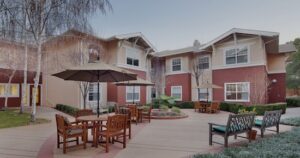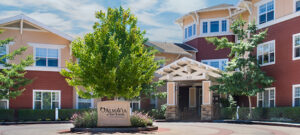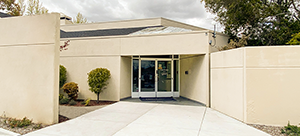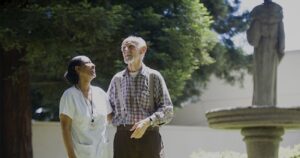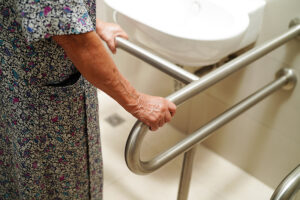Elder abuse is becoming an ever-increasing public health problem, particularly as older populations continue to increase. According to the World Health Organization, “ Elder abuse is an important public health problem…15.7% of people aged 60 years and older were subjected to some form of abuse. However, this is likely to be an underestimation, as only one in 24 cases of elder abuse is reported, in part because older people are often afraid to report cases of abuse to family, friends, or the authorities.”
With the increase in older populations continuing to grow rapidly, more than 320 million elder abuse victims by the year 2050 if the percentage of elder abuse victims stays the same.
Many different health organizations have their own definition of elder abuse. The CDC defines elder abuse as “an intentional act or failure to act that causes or creates a risk of harm to an older adult. An older adult is someone age 60 or older. The abuse often occurs at the hands of a caregiver or a person the elder trusts.”
Types of Elder Abuse
Just as in the general population, there are many different types of elder abuse. However, in a National Center on Elder Abuse study, researchers discovered that elder financial abuse is the most commonly reported type of abuse. In contrast, physical abuse was most likely to include another form of abuse.
As to who is most likely to abuse an older adult, studies have shown family members are most frequently the abuser. However, no matter who the perpetrator is, there are five different types of elder abuse.
Physical Abuse
Physical abuse involves physical force or coercion, whether intentionally or carelessly, resulting in physical harm, impairment, physical pain, or injury. For elder abuse, this can look like force-feeding someone, physical punishment, physically restraining an elder, using some form of chemicals to restrain an elder, leaving them in soiled clothing, intentionally not caring for a patient so that they develop pressure sores or withholding medications from patients. It can also look similar to the broader definition of physical abuse: kicking, pulling/pushing, hitting, beating, and slapping.
Emotional/Psychological Abuse
Emotional abuse involves inflicting distress through nonverbal or verbal actions. Some examples include geographic isolation, interpersonal isolation, humiliation, intimidation, disrespect, harassment, verbal and non-verbal threats, and depriving older adults of the dignity of choice over their daily affairs.
Financial Abuse
Elder financial abuse involves the improper (or illegal) use of an older adult’s property, assets, or funds. This can look like stealing possessions or money, improper use of guardianship or power of attorney, or coercing an older person into signing documents such as wills and contracts.
Sexual Abuse
This type of abuse involves forced or non-consensual sexual contact with an older adult. It can include abuse perpetrated through the exploitation of authority, unwanted touching or sexual contact, sexual assault and battery, non-contact sexual acts like sexual harassment, and sexual interactions with those who lack the ability to give consent.
Neglect
Elder abuse and neglect is the failure to fulfill an older adult’s basic needs, including shelter, clothing, food, water, personal hygiene, medications, essential medical care, personal safety, and comfort.
Signs of Elder Abuse
While there are some significant signs of elder abuse, any abuse types are impacted by the older adult’s cognitive and physical condition. Abuse can lead to hospitalizations. Signs of elder abuse are also affected by the elder’s emotional state and connection to various social environments.
Here is a list of some of the signs of elder abuse:
- A withdrawal from the activities of daily living
- Emotional agitation or distress
- Unusual behaviors that most commonly are connected with dementia
- A lack of self-care or low self-esteem, feeling worthless
- Abrasions, bruises, welts, or lacerations
- Different types of physical traumas — bone fractures/sprains/breaks, unusual wounds/cuts/punctures, bite or burn marks, internal injuries
- Evidence of restraints — whether physical or chemical
- A sudden change in behavior, such us becoming uncommunicative or sudden cognitive decline
- Abrupt changes to wills, life insurance, or other financial documents
- Sudden changes in banking practices — withdrawing large sums of money, adding other people to accounts, and sudden transfers of assets
- Malnutrition, unpaid bills, or a general lack of financial care
- Dehydration, untreated bedsores, and unsanitary living conditions
- Unexplained genital infections, STDs, or physical trauma to the breasts or genital area
- Restlessness while sleeping or other sleep disturbances
Potential Preventative Factors
There are many ways to help prevent elder abuse. While these strategies still need more research, using preventative measures can keep a loved one safe from elder abuse. Below are some protective factors that could have the potential to protect an older adult:
- Ensure that the older adult has numerous, strong relationships with people in all different levels of social status. Check-in with them often.
- Listen to older adults and ask them about their challenges, then provide support.
- For anyone employed to be a caretaker of an older adult, maintaining regular educational training on elder abuse and neglect.
- For those involved in the care of an elder, learn how to delineate between the signs of elder abuse and the normal aging process.
- Education of both family members/friends and the older adult regarding their financial rights and a working knowledge of how legal/financial structures work.
- Regular visitation from family members, social workers, or volunteers.
- In institutional settings, enacting policies and procedures that ensure the safety of patients.
- Support caregivers through help from community resources, adult day care programs, or counseling.
How to Report Elder Abuse
Elder abuse in California has serious legal consequences. If you suspect elder abuse or have concerns for the older adult’s immediate health, call 911, and first responders will be able to help assess the situation and provide medical care. Then you will need to call and report the abuse to your county’s Adult Protect Services provider (APS). This is a county-funded program that helps dependent adults and seniors who “are unable to meet their own needs, or are victims of abuse, neglect or exploitation.” They will investigate the abuse and have the ability to report their findings to law enforcement, licensing boards, or any other government agencies.
To file a report, call your county’s 24-hour phone number. You can also fill out different paperwork related to the abuse, including a special report form for financial institutions that suspect fraud.
There are also other community resources in California where you can report abuse:
- Office of the State Long-Term Care Ombudsman (OSLTCO): 1-800-231-4024
- Attorney General’s Bureau of Medi-Cal Fraud and Elder Abuse: 1-800-722-0432
- California Department of Health Care Services: 1-800-822-6222
Elder Care Alliance
Elder Care Alliance has been serving seniors and their families in California for nearly 20 years. From day one, our mission and vision have been centered on the care of seniors — putting their well-being and dignity at the forefront of all we do. Our vision is clear: Engaging hearts, transforming lives, erasing boundaries. We want our communities to be not just places where seniors live but places where seniors flourish. We operate a network of communities that offer different levels of service depending on each resident’s needs.
For a safe and loving environment for an older adult in your life, contact Elder Care Alliance to see how we can help provide the care your loved one needs.

